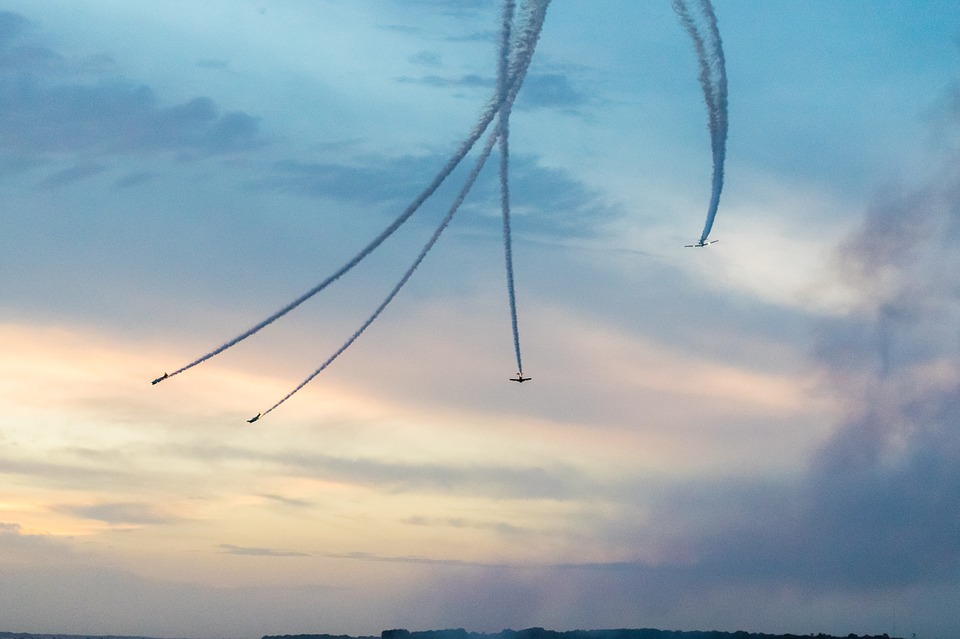
Advertisement
You might have seen human cannonball acts where seemingly suicidal thrill-seekers load themselves into huge cannons that “fire” them towards targets. Now replace the cannon with a propeller-driven rocketship that looks like a giant rubber dart, and you have a rough idea of the newest airborne menace that Boeing might consider producing in the future, an article in New Atlas stated.
The aptly named Dart Flyer is a conceptual design for a one-man “personal flyer.” Devised by Swiss aircraft design company Ray Research AG, it is one of the competing entries in the Boeing-sponsored GoFly contest.
Ray Research’s main project is the Ray vertical-take-off-and-landing VIP aircraft, which looks like a futuristic flying manta ray and seats five people. Some of the technology from this different vehicle was adapted onto the Dart Flyer.
“The Dart” is a bigger version of an earlier remote-controlled tail-sitter aircraft. Tail-sitters are called as such because they take off and land on their tails in much the same way as SpaceX’s reusable Falcon rockets.
Whereas a human cannon uses springs instead of gunpowder or explosives, the Dart Flyer is powered by four electric motors that launch it and its single occupant into the air. According to the Ray Researcher website, each motor is reputedly fail-safe and rated to provide at least 75 percent power even after suffering a malfunction. (Related: Electric planes make debut at Fresno’s Chandler Airport.)
Dart Flyer, the tail-sitter aircraft that turns you into a human missile
Any soul brave enough to try out the Dart Flyer must first climb into its cramped space. The tail-sitter takes off from the ground like a propeller-driven rocket.

Once it is airborne, the Dart tilts forward for level flight so that it can take advantage of the lift generated by its small wings and make the most use of its limited power supply. Since its pilot flies head first, he or she gets a good idea of what a guided missile feels like as it careens towards its target at high speed.
The personal flyer stands at a height of 6.6 feet (two meters) and boasts a compact wingspan of 7.9 ft (2.4 m). It will be able to take off and land in most parking spaces or the flatbeds of bigger trucks, which might be an impressive daredevil stunt.
“To achieve maximum safety the Dart will use the patent pending fail-safe electric propulsion system, that Ray Research AG has developed for the long range VIP Ray aircraft,” stated an article on EVTOL News. “The pilot will enjoy a maximum freedom adventure when flying headfirst powered by the four electric fans!”
The designers have not yet released any information on the flight control systems of the Dart Flyer. It is, however, definitely going to be manned.
Boeing-sponsored challenge wants “safe, useful, and thrilling” personal aircraft
The GoFly contest calls on participants to design a personal flyer that can carry a single pilot/passenger over a distance of 20 miles (32 km). The design must use a means of flight that is “safe, useful, and thrilling.”
The challenge is funded by Boeing. Technical papers submitted during the first round – such as the Dart Flyer design – will receive $20,000. Actual demonstrations of VTOL aircraft will get $50,000.
The final fly-off is scheduled for October 1, 2019. The participating personal flyer that gets the best score will be awarded a million dollars.
The quietest aircraft and the smallest flyable design will each get $250,000. Finally, a vehicle that takes everything that is currently known and understood about flight, turns it upside down, and yet also advances aircraft technology will be given $100,000.
Learn more about the technological advances on human flight at ElonMuskWatch.com.
Sources include:
Submit a correction >>
This article may contain statements that reflect the opinion of the author
Advertisement
Advertisements















